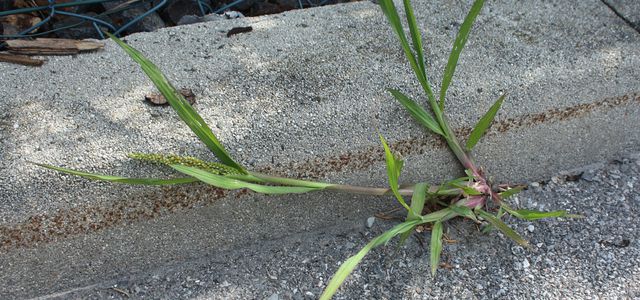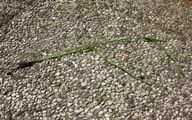
Chicken millet is a dreaded weed not only in corn and rice cultivation. In this article you will learn how to get rid of the weed in your garden and how to use the plant.
Chicken millet is widespread in the garden because it spreads very quickly. Over time, the weed can crowd out your lawn or take away light and nutrients from your vegetables. Here’s everything you need to know about chicken millet, how to control it and whether you can use the unpopular weed in the kitchen.
Contents
What you should know about chicken millet

Chicken millet is the most common weed in corn cultivation in our latitudes. However, it also occurs worldwide, for example in rice cultivation. The invasive weed can significantly reduce crop yields. In organic farming, it is controlled by mechanical measures such as hoeing.
Chicken millet is an annual, herbaceous plant. Several stiff culms extend relatively horizontally from an often strongly branched base – in the older plant, they may also stand at an angle.
The flowering period of the chicken millet is from July to September. The seeds ripen from October into the fall and disperse with the wind. The grass dies with the first frosts, but the seeds remain germinable in the soil for up to five years.
Seeds collect especially easily in crevices of flagstones and borders – where the light germinator is often seen. Chicken millet has strong roots and can even contribute to damage in asphalt.
Control chicken millet in lawns and beds

Chicken millet is an annual plant and dies in winter. But each individual inflorescence bears countless seeds. Since the seeds are dispersed over a very large area by the wind, the weed spreads invasively quickly.
Therefore, be sure to remove all chicken millet plants in the garden no later than the end of August to prevent them from forming mature seeds. In the vegetable garden and lawn, you should dig up any chicken millet. Since the plant grows horizontally in the lawn, you can do little harm to it by mowing the lawn.

Chicken millet is an annual plant and dies in winter. But each individual inflorescence bears countless seeds. Since the seeds are dispersed over a very large area by the wind, the weed spreads invasively quickly.
Therefore, be sure to remove all chicken millet plants in the garden no later than the end of August to prevent them from forming mature seeds. In the vegetable garden and lawn, you should dig up any chicken millet. Since the plant grows lying down in the lawn, you can do little harm to it by mowing the lawn.
You can most easily dig up the weeds when the soil is slightly moist and loose. Use a narrow planting shovel to weed the weeds:
Stab the shovel deep into the soil about an inch beside the chicken millet.
Loosen the soil around the plant.
Remove the chicken millet with the whole root.
Note: You should not put the dug up plant parts into the garden compost. Already mature seeds could survive composting and germinate next year.
Remove chicken millet from gaps, cracks and from boundary stones.
In cracks and small spaces, chicken millet usually cannot be removed along with the root. Therefore, cut chicken millet close to the ground with pruning shears or a knife. Repeat the process regularly to prevent the weed plant from forming seed heads. Since chicken millet is an annual plant, it will die in winter and will not sprout again the next year.
As bird food:
If you keep birds, you can give them semi-ripe and ripe seed heads as a treat. Budgies in particular love to eat the weed. However, chicken millet is not used as a commercial feed plant.
In the kitchen:
Chicken millet is not used for cooking today. However, the plant and seeds are basically edible for humans. In wartime, the plant served as a substitute for grain millet.
You can make the green parts of the plant into smoothies, similar to wheatgrass juice made from wheatgrass.
Bake semi-ripe and ripe seeds into bread or sprinkle them over cereals and salads.
Chicken millet and other millet species
Chicken millet is a species of wild millet. Millet” is the name given to small-fruited spelt cereals, and there are a total of ten to twelve genera. Among them is the Japan millet, which was bred in Japan from the chicken millet. In the trade you can find more developed cultivated forms of the wild millet varieties, which offer more yield, for example the golden millet, brown millet, sorghum and teff.
Note: If you are allergic to grass pollen, eating millet and sorghum may cause allergic reactions.

